Macrofaunal control of microbial community structure in continental margin sediments
- PMID: 32576690
- PMCID: PMC7376573
- DOI: 10.1073/pnas.1917494117
Macrofaunal control of microbial community structure in continental margin sediments
Abstract
Through a process called "bioturbation," burrowing macrofauna have altered the seafloor habitat and modified global carbon cycling since the Cambrian. However, the impact of macrofauna on the community structure of microorganisms is poorly understood. Here, we show that microbial communities across bioturbated, but geochemically and sedimentologically divergent, continental margin sites are highly similar but differ clearly from those in nonbioturbated surface and underlying subsurface sediments. Solid- and solute-phase geochemical analyses combined with modeled bioturbation activities reveal that dissolved O2 introduction by burrow ventilation is the major driver of archaeal community structure. By contrast, solid-phase reworking, which regulates the distribution of fresh, algal organic matter, is the main control of bacterial community structure. In nonbioturbated surface sediments and in subsurface sediments, bacterial and archaeal communities are more divergent between locations and appear mainly driven by site-specific differences in organic carbon sources.
Keywords: bioturbation; burrow ventilation; organic carbon sources; particle reworking; redox state.
Copyright © 2020 the Author(s). Published by PNAS.
Conflict of interest statement
The authors declare no competing interest.
Figures
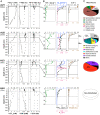
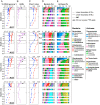

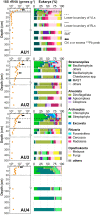
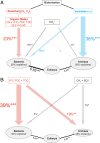
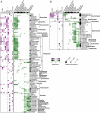
References
-
- Hedges J. I., Keil R. G., Sedimentary organic matter preservation: An assessment and speculative synthesis. Mar. Chem. 49, 81–115 (1995).
-
- Froelich P. N.et al. ., Early oxidation of organic matter in pelagic sediments of the eastern equatorial Atlantic: Suboxic diagenesis. Geochim. Cosmochim. Acta 43, 1075–1090 (1979).
-
- Canfield D. E., Thamdrup B., Hansen J. W., The anaerobic degradation of organic matter in Danish coastal sediments: Iron reduction, manganese reduction, and sulfate reduction. Geochim. Cosmochim. Acta 57, 3867–3883 (1993). - PubMed
-
- Schippers A., Neretin L. N., Quantification of microbial communities in near-surface and deeply buried marine sediments on the Peru continental margin using real-time PCR. Environ. Microbiol. 8, 1251–1260 (2006). - PubMed
Publication types
MeSH terms
Substances
LinkOut - more resources
Full Text Sources

